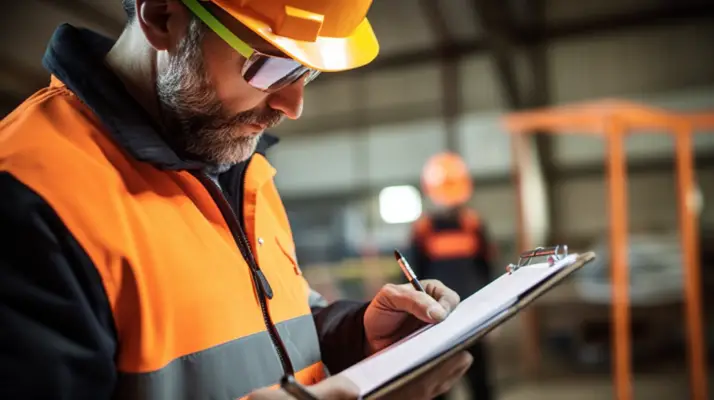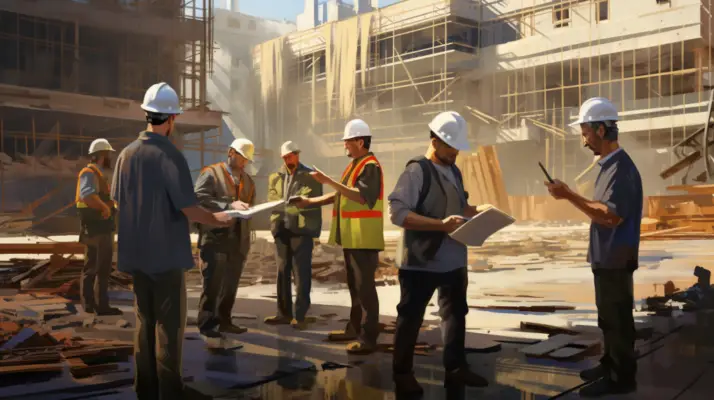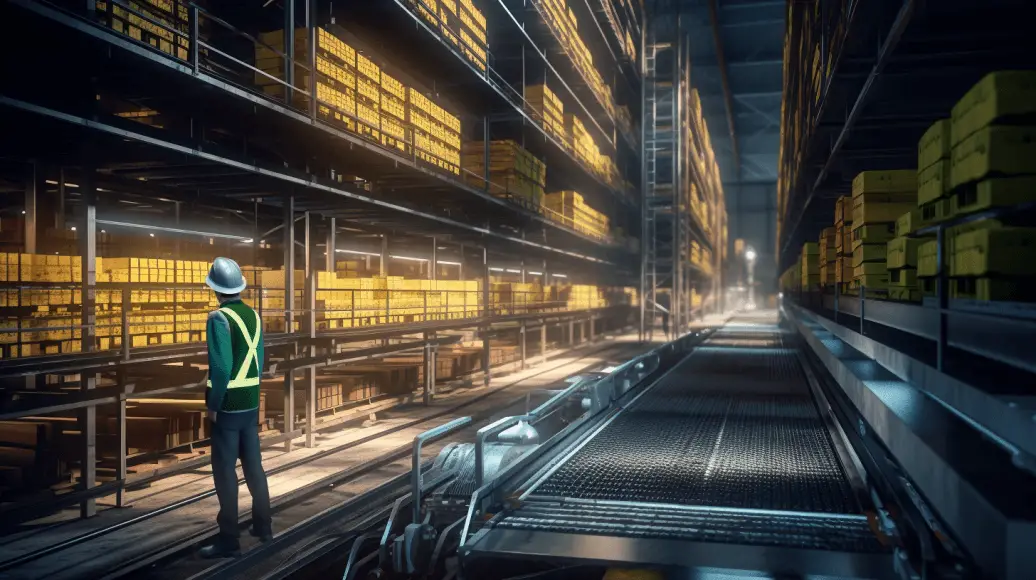Conveyor belt systems are widely used in various industries, including mining, to transport materials efficiently and smoothly. However, these systems can pose significant risks and hazards if not properly assessed and managed.
A comprehensive risk assessment is crucial to identify potential hazards and implement appropriate control measures to mitigate the associated risks.
This article aims to provide an example of a conveyor belt risk assessment, focusing specifically on the mining industry. It will explore the different types of conveyors commonly used in mining operations and highlight the hazards associated with their operation.
Examining the potential risks involved in belt conveyor systems, this article aims to offer insights into effective risk assessment practices and strategies for ensuring the safety of workers and overall operational efficiency.
This article will provide valuable information to industry professionals, safety managers, and researchers involved in conveyor belt risk assessment and management through a detail-oriented and organised approach.
Adopting an objective and impersonal writing style, this article intends to deliver comprehensive and reliable information to enhance safety standards and practices in the mining industry.

Definition of Conveyor Belt Risk Assessment
This will provide an overview of risk assessment, specifically focusing on the conveyor belt risk assessment definition.
Risk assessment is a systematic process that identifies, analyzes, and evaluates potential risks associated with a particular task or activity.
In conveyor belts, risk assessment involves identifying hazards, assessing their potential impact, and implementing control measures to mitigate the identified risks.
Overview of Risk Assessment
An examination of the risk assessment process for conveyor belts reveals a comprehensive and systematic approach to identifying and analyzing potential hazards.
The risk assessment for conveyors is essential in ensuring the safety of maintenance personnel and reducing the risk of injury. A visual inspection is typically conducted to identify potential hazards such as faulty components, inadequate guarding, or improper maintenance of conveyor systems.
Additionally, the type of conveyor and its specific operation are considered to determine the level of risk involved.
Conveyor experts, including conveyor manufacturers and those knowledgeable in standards and risk assessments, play a crucial role in conducting a thorough assessment.
Following this detailed and organized approach, the risk assessment process significantly reduces the likelihood of severe injuries and provides valuable insights for implementing necessary safety measures.
| Risk Assessment Process |
|---|
| 1. Identify potential hazards |
| 2. Conduct a visual inspection |
| 3. Assess risk based on conveyor type |
| 4. Engage conveyor experts |
| 5. Implement necessary safety measures |
Types of Conveyors
First, belt conveyors are commonly used to transport goods from one point to another along a continuous belt. They are versatile and can handle a wide range of materials.
Second, portable conveyors are designed to be easily transported and can be set up quickly for temporary use. They are commonly used in construction sites or for loading and unloading trucks.
Lastly, aerial conveyors are elevated systems that use cables or chains to transport materials. They are often used in industries with limited ground space or materials that must be transported long distances.
Belt Conveyors
Belt conveyors play a pivotal role in industrial operations, serving as a reliable and efficient means of transporting materials and goods.
When assessing the risks associated with belt conveyors, detailed studies have been conducted to identify potential hazards and prevent fatal accidents.
One such study focused on assessing belt conveyor accidents, analyzing various factors such as electrical controls and measuring belt conveyor speed.
A comprehensive assessment of belt conveyors should be conducted to enhance safety, considering factors such as maintenance procedures, operator training, and emergency stop controls.
Additionally, an article on conveyor hazards highlights the importance of risk assessment in preventing accidents and promoting a safer working environment.
Conducting a thorough assessment of belt conveyors, potential risks can be identified and mitigated, ensuring the safety of workers and preventing accidents.
Portable Conveyors
Portable conveyors are an essential tool in various industries, offering a flexible and efficient means of transporting materials and goods while also providing the convenience of easy manoeuvrability and quick setup.
These belt conveyor systems are designed to handle various materials, from heavy-duty objects to small components. They can be easily moved and positioned to accommodate different workflow requirements.
Portable conveyors are commonly used with other aspects of belt conveyor installations, such as aerial conveyors, to create a comprehensive and efficient conveyor system.
However, it is crucial to conduct thorough risk assessments on belt conveyors, including portable conveyors, to ensure the safety of workers and prevent accidents.
One important aspect to consider is the presence of nip points. The belt comes into contact with other components in these areas, as they pose a significant risk for entrapment or injury.
Portable conveyors can be optimized for safe and efficient material handling operations by assessing and addressing these potential hazards.
Aerial Conveyors
Aerial conveyors transport materials over long distances, commonly found in continuous mining machines.
When conducting an assessment on belt conveyors, it is crucial to consider conveyor belt tracking and the overall design of the conveyor.
Aerial conveyors often require additional safety measures due to their elevated position. Regular inspections and maintenance should be carried out to ensure the proper functioning of these conveyors.
To enhance conveyor safety, a comprehensive inspection checklist should be followed, considering the mining experience and specific industry requirements.
It is important to incorporate physical guards and other safety features to minimize the risk of accidents and injuries.
Aerial conveyors play a significant role in the mining industry, but their safe operation relies on thorough assessments, regular inspections, and adherence to safety guidelines.
- Proper conveyor belt tracking.
- Regular inspections and maintenance.
- Comprehensive inspection checklist.
- Incorporation of physical guards and safety features.
Other Types of Conveyors
Another type of conveyor commonly used in various industries is the vertical conveyor, designed to transport materials vertically between different levels within a facility.
Vertical conveyors are an important component of conveyor systems, and they come in different forms, such as continuous bucket elevators, reciprocating lifts, and spiral conveyors.
These conveyors are used in industries ranging from manufacturing to warehousing, and they play a crucial role in improving efficiency and productivity.
However, vertical conveyors pose risks and hazards to workers like other conveyors.
The conveyor equipment manufacturers association and other regulatory bodies have established prescriptive and applicable safety standards for different industries to ensure worker safety.
Conducting a formal risk assessment process is essential to identify and mitigate potential hazards associated with vertical conveyors.
The specific industry, the type of materials being transported, and the facility’s layout should be considered when assessing the risks associated with vertical conveyors.
Hazards Associated with a Conveyor Belt System
This paragraph will discuss the hazards associated with a conveyor belt system.
- Electrical controls and motors pose a hazard due to the potential for electrical shock or malfunction.
- Entanglement hazards can occur when loose clothing or body parts get caught in the moving parts of the conveyor belt system.
- Moving parts and sharp edges can cause injuries if individuals come into contact with them.
- Slipping or falling objects from above can result in serious injuries or fatalities if proper precautions are not taken.
- Lastly, noise levels can be hazardous, leading to hearing loss if workers lack proper hearing protection.
Overall, being aware of these hazards and implementing appropriate safety measures is crucial to ensure the safe operation of a conveyor belt system.

Electrical Controls and Motors
Electrical controls and motors play a crucial role in ensuring the safe and efficient operation of conveyor belts, highlighting the importance of their proper functioning for preventing potential hazards and accidents.
In the conveyor industry, electrical controls are responsible for regulating the movement of the conveyor belt and maintaining its speed and direction. They allow for precise control over the conveyor system, ensuring that materials are transported smoothly and without disruptions.
Additionally, conveyor drive motors provide the necessary power to move the belt and maintain its tension.
Proper maintenance and adherence to performance standards are essential to ensure that electrical controls and motors operate effectively and minimize the risk of equipment-related occupational accidents.
The conveyor industry has specific safety standards, such as using conveyor loop take-up systems to prevent the belt from becoming loose and conveyor exits without following the lock. These are additional measures to guarantee safe operation.
However, no definitive safety standard outlines the exact requirements for electrical controls and motors.
Therefore, companies must implement their own comprehensive safety protocols to mitigate potential hazards and accidents associated with these components.
Entanglement Hazards
Entanglement hazards are a significant concern in conveyor belt risk assessment examples. These hazards occur when workers come into contact with moving conveyor equipment parts, such as belts, pulleys, or rollers.
To mitigate entanglement risks, various safety measures can be implemented.
- Belt guards: These are physical barriers that cover the moving parts of the conveyor belt, preventing accidental contact.
- Nip point guards: These guards are designed to cover the pinch points where the conveyor belt comes into contact with other equipment or structures.
- Peripheral guards: These guards enclose the entire perimeter of the conveyor system, preventing access to dangerous locations.
- Barrier guards are installed to create a physical barrier between workers and the conveyor equipment, ensuring a safe distance is maintained.
In addition to these safety devices, considering human factors is crucial. Adequate training, signage, and clear procedures should be in place to ensure workers understand the potential risks and how to operate safely around conveyor equipment.
Moving Parts and Sharp Edges
Moving parts and sharp edges present a significant danger to workers, eliciting a sense of vulnerability and apprehension in the audience.
These hazards can be found in various components of a conveyor facility. Belt conveyors, commonly used in industries such as mining and manufacturing, consist of moving parts that can cause injuries if not properly safeguarded.
For instance, the conveyor infeed hopper may contain sharp edges that can cause lacerations or puncture wounds if workers contact them. Additionally, rotating drums used in conveyor haulage can trap and crush body parts if not adequately protected.
Nip guards and conveyor netting are some safety measures that can be implemented to mitigate the risk of accidents related to moving parts and sharp edges in a conveyor facility.
Slipping or Falling Objects from Above
Moving Parts and Sharp Edges on conveyor belts can pose significant risks to workers, but they are not the only hazards that need to be considered.
Slipping or Falling Objects from Above is another potential danger in conveyor belt operations. This occurs when items or materials fall from a height and strike workers below. Such incidents can cause severe injuries or even fatalities.
To mitigate this risk, safety measures must be implemented. The ASME B20.1 standard provides conveyor safety guidelines, including delivery end nip guards and controls with safety devices. Continuous mining equipment-related fatal incidents have highlighted the importance of these control devices.
While the ASME B20.1 standard does not have prescriptive requirements for falling objects, facility operators must assess the specific hazards and implement appropriate controls to protect workers from this type of hazard.
Noise Levels
One important aspect to consider in conveyor belt operations is the potential impact of noise levels on worker safety and well-being.
Excessive noise can be detrimental to workers’ hearing and overall health and impede communication and concentration, leading to potential safety hazards.
In the Australian and coal mining industries, noise levels generated by conveyor belt systems are a significant concern.
To address this issue, a comprehensive conveyor belt risk assessment example should include actionable requirements for noise control measures. Computational studies can be conducted to identify the typical locations where noise levels exceed acceptable limits.
Implementing measures such as installing noise barriers, using quieter belt tension drum systems, and restricting access by personnel to noise-affected areas can help mitigate the risk of mining-related fatalities and promote a safer working environment.
Risks in the Mining Industry Involving Belt Conveyor Systems
Fatal accidents involving belt conveyor systems are a significant concern in the mining industry. These accidents often result in serious injuries or loss of life, making identifying and mitigating the associated risks crucial.
Understanding the specific hazards and implementing appropriate safety measures are essential for ensuring the well-being of workers and preventing such tragic incidents.
Fatal Accidents Involving Belt Conveyor Systems
Belt conveyor systems have been associated with tragic accidents resulting in loss of life. Fatal accidents involving belt conveyor systems are a serious concern in the mining industry.
Countless belt conveyors are used in mining operations to transport bulk materials such as ore, coal, and other bulk solids.
The design process for these conveyor systems involves the selection of appropriate assemblies for the conveyor belt and the decision process for their installation.
Mining-related fatalities related to belt conveyor systems have prompted companies to conduct risk assessments to identify potential hazards and implement safety measures.
These assessments often involve analyzing company details, citation lists, and citation databases to gather information on previous incidents and best practices.
Ensuring the safety of workers in the mining industry requires a thorough and detail-oriented approach to managing the risks associated with belt conveyor systems and bulk solids material handling.
Frequently Asked Questions
What are the specific steps involved in conducting a conveyor belt risk assessment?
The specific steps involved in conducting a conveyor belt risk assessment include identifying potential hazards and evaluating the likelihood and severity of those hazards.
Implementing control measures and regularly reviewing and updating the assessment to ensure ongoing safety compliance.
Are there any regulations or standards to be followed when performing a conveyor belt risk assessment?
When performing a conveyor belt risk assessment, it is important to adhere to regulations and standards such as the Occupational Safety and Health Administration (OSHA) guidelines and the International Organization for Standardization (ISO) standards.
What common control measures or safety precautions can be implemented to mitigate the risks associated with conveyor belt systems?
Common control measures and safety precautions that can be implemented to mitigate risks associated with conveyor belt systems include implementing emergency stop buttons.
Providing adequate operator training, installing guardrails, conducting regular maintenance checks, and ensuring proper lockout/tagout procedures are followed.
How often should a conveyor belt risk assessment be conducted in the mining industry?
A regular conveyor belt risk assessment should be conducted in the mining industry to ensure the ongoing identification and mitigation of hazards.
The frequency of these assessments may vary based on industry regulations and specific site conditions.
Are there any specific training requirements for workers operating or working near conveyor belt systems in the mining industry?
Workers operating or working near conveyor belt systems in the mining industry must undergo specific training to ensure their safety.
This training covers hazard identification, safe operation procedures, emergency response, and maintenance requirements.

Conclusion
Conducting a thorough risk assessment is essential for conveyor belt systems.
Identifying the hazards associated with the different types of conveyors and understanding the risks involved in the mining industry, steps can be taken to mitigate these risks and ensure the safety of workers.
It is crucial to implement proper safety protocols, provide adequate training, and regularly inspect and maintain conveyor belt systems to minimize potential accidents and injuries.
Taking these precautions will help create a safer working environment for all.

Chris Ekai is a Risk Management expert with over 10 years of experience in the field. He has a Master’s(MSc) degree in Risk Management from University of Portsmouth and is a CPA and Finance professional. He currently works as a Content Manager at Risk Publishing, writing about Enterprise Risk Management, Business Continuity Management and Project Management.

